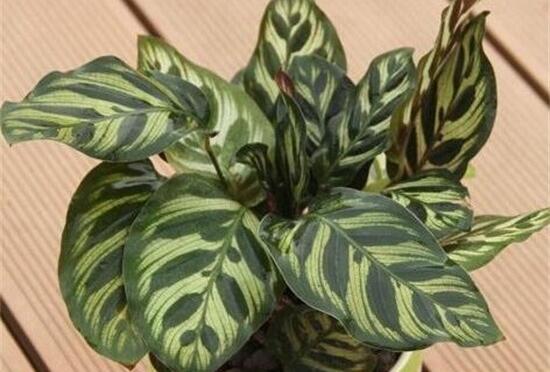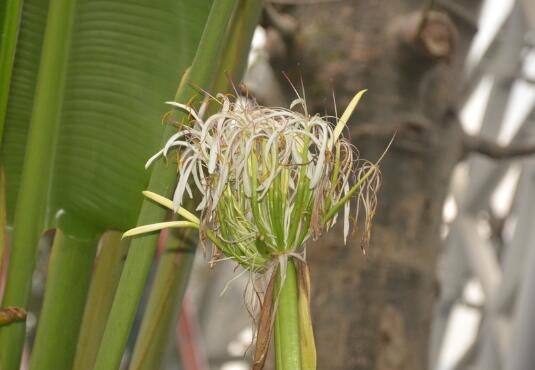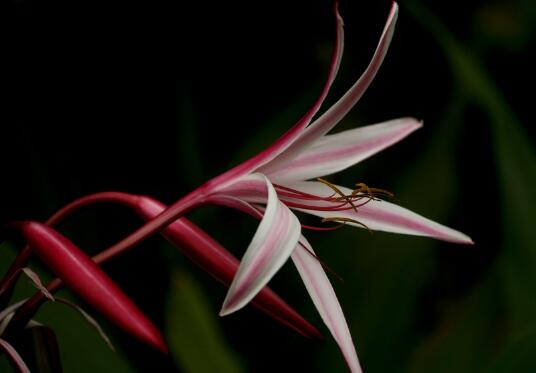How to do the peacock bamboo taro leaf curl, adjust the temperature to increase humidity / watering to the right amount
For peacock taro, friends who have seen it should be impressed. Its leaves are not only evergreen all the year round, but also have a peacock feather pattern on it, which is really very strange. Because of the ornamental value of peacock bamboo taro, many people will keep it at home, but the leaves of peacock bamboo taro leaves curl, how is this going on? Today the editor will tell you the answer.
1. Peacock bamboo taro leaves curl, find the reason

Peacock taro is a tropical plant, it likes high temperature, high humidity environment, in indoor breeding, because the environment is not up to standard, the peacock taro will often appear curly phenomenon, the leaves can not stretch freely, and the lower leaves of the plant will appear withered and yellow. What about the peacock bamboo taro leaf curl? In this regard, the editor summed up four reasons, and attached solutions, let's move on.
2. the causes of the curl of peacock bamboo taro leaves and its solutions.
1. Improper temperature and humidity
According to the editor, generally speaking, the leaves of peacock bamboo taro curl because of inappropriate temperature and humidity.
① temperature is too low
Peacock taro is a tropical plant, it likes the high temperature growth environment, in indoor breeding, if the temperature is too low, it will make it curl.
The solution: simply move the peacock taro to a place with a high temperature (above 16 ℃). However, it should be noted that do not move to a place where the temperature is too high. After careful maintenance for a period of time, the leaves will return to health.
② is not humid enough.
In addition to the high temperature, peacock bamboo taro also likes the high humid environment, in peacetime we should ensure that the basin soil and air should be kept at a high humidity. Once the humidity is not enough, the peacock bamboo taro leaves will curl.
Solution: sprinkle water around the peacock taro to increase air humidity; in addition, we should often spray water on the leaves to cool and moisturize, with a humidity of 70% and 80% at best.
2. Improper watering
In addition to the solution and improper humidity, if the watering method is not correct, too much watering or not watered for a long time, there will also be symptoms of peacock bamboo taro leaf curling.
Too little watering for ①
Peacock bamboo taro likes a humid environment and usually needs more watering to keep the basin soil moist. Once the water is too little, the lack of water can not meet the growth needs of peacock taro, and its leaves will also appear curly symptoms.
Solution: replenish the peacock taro with water, but don't pour too much water at once, just keep the basin soil moist.
② watered too much
In addition, too much watering leads to stagnant water in the basin, which is also the reason for the curl of peacock bamboo taro leaves. Peacock taro likes to be wet, but if there is water in the basin, it will cause its rotten roots, curly leaves and yellowing.
Solution: move the peacock taro to a ventilated astigmatism and let the water evaporate quickly; in serious cases, replace it with fresh cultivated soil, and then replant it.
What to do about the leaf curl of peacock bamboo taro: symptoms of discomfort of ambient temperature and humidity
When the peacock bamboo taro sweltering environment, the plant growth is poor, the leaves will gradually curl, and no longer stretch freely. If no measures are taken, over time, it will rot leaves, roots, and even wither and die.
Solution method
Strengthen daily water and fertilizer management to ensure adequate nutrients of plants and enhance disease resistance.
If the plant is placed in an indoor closed environment, spray at least 3 times a day except on cloudy and rainy days to increase humidity.
If the leaf atrophy is particularly serious, you can use plastic bags to cover all the plants, poking some small holes in the basin mouth can not only maintain a certain humidity, but also can be properly ventilated to facilitate recovery.
What to do about the leaf curl of peacock bamboo taro 2: too little watering and low humidity
Peacock bamboo taro likes a relatively humid environment. If the watering method is incorrect and the soil is not watered for a long time, the internal soil will gradually harden and the external performance can not be seen, but with the passage of time, the leaves will gradually curl, accompanied by partial withering, lower leaves withered and yellow.
Solution method
Peacock bamboo taro is native to the tropical rain forest of South America, and the growth change is required to be relatively humid, except that the basin soil must be kept moist and cannot wait for the basin soil to dry before watering, as long as there is no stagnant water and rotten roots, we should also maintain a high air humidity in the surrounding environment. Therefore, in summer, the plant should be placed in a semi-shady place and spray water to the leaves 2 or 3 times a day to humidify and cool down and promote the robust growth of the plant.
- Prev

How to raise Wenshu orchid, the breeding methods and precautions / sufficient light of Wenshu orchid
Wenshu orchid is a kind of flower plant native to Indonesia, which is highly ornamental, and there are many people who raise it in our country. However, if you want to raise it well, there are many things you need to pay attention to, so how to raise Manjusri? What are the culture methods and points for attention of Wenshu orchid?
- Next

What to do when the leaves of the orchids turn yellow, apply thin fertilizer/control the amount of watering/avoid strong light
Crucifera is a kind of ornamental flower plant, which can be potted or planted in large areas. However, ornamental plants will also affect their overall beauty if their leaves are yellow. So what if the leaves turn yellow? The following small series takes everyone to understand
Related
- Fuxing push coffee new agricultural production and marketing class: lack of small-scale processing plants
- Jujube rice field leisure farm deep ploughing Yilan for five years to create a space for organic food and play
- Nongyu Farm-A trial of organic papaya for brave women with advanced technology
- Four points for attention in the prevention and control of diseases and insect pests of edible fungi
- How to add nutrient solution to Edible Fungi
- Is there any good way to control edible fungus mites?
- Open Inoculation Technology of Edible Fungi
- Is there any clever way to use fertilizer for edible fungus in winter?
- What agents are used to kill the pathogens of edible fungi in the mushroom shed?
- Rapid drying of Edible Fungi

